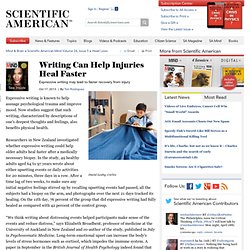

“Mini Bug” to operate Inside Astronauts as a Robot Surgeon. Can you imagine the solitude of the deep space astronauts who work in space for months before returning back to the planet home “Earth”.

Alfonso Cuarón may have provided you with a wispy perception of “what’s it like to be in space all alone”. It is never an easy job to work around in such remote conditions with the nearest rescuing service only a thousand miles away. Virtual Incision is working over to design tiny medical robots capable of operating inside an astronaut’s body through a small belly button incision just like the creepy bug plant scene from “The Matrix”. Although all the possible precautionary measures are ensured to avoid any mishaps or emergencies in the deep space projects, however there are always chances and probabilities of encountering deplorable situations. A presentation at the NASA Human Research Program Investigator’s Workshop depicted that such medical scenarios have been reported at remote locations during polar expeditions and military submarine services. Writing Can Help Injuries Heal Faster. Expressive writing is known to help assuage psychological trauma and improve mood.

Now studies suggest that such writing, characterized by descriptions of one's deepest thoughts and feelings, also benefits physical health. Researchers in New Zealand investigated whether expressive writing could help older adults heal faster after a medically necessary biopsy. In the study, 49 healthy adults aged 64 to 97 years wrote about either upsetting events or daily activities for 20 minutes, three days in a row.
After a time lag of two weeks, to make sure any initial negative feelings stirred up by recalling upsetting events had passed, all the subjects had a biopsy on the arm, and photographs over the next 21 days tracked its healing. On the 11th day, 76 percent of the group that did expressive writing had fully healed as compared with 42 percent of the control group.
Bleeding and Wounds. Repairing Senses. Limb & Organ Replacement. Pain Blockers. Fixing Bones. Injecting life-saving oxygen into a vein. Patients unable to breathe because of acute lung failure or an obstructed airway need another way to get oxygen to their blood -- and fast -- to avoid cardiac arrest and brain injury.

A team led by researchers at Boston Children's Hospital has designed tiny, gas-filled microparticles that can be injected directly into the bloodstream to quickly oxygenate the blood. The microparticles consist of a single layer of lipids (fatty molecules) that surround a tiny pocket of oxygen gas, and are delivered in a liquid solution. In a cover article in the June 27 issue of Science Translational Medicine, John Kheir, MD, of the Department of Cardiology at Boston Children's Hospital, and colleagues report that an infusion of these microparticles into animals with low blood oxygen levels restored blood oxygen saturation to near-normal levels, within seconds.
"This is a short-term oxygen substitute -- a way to safely inject oxygen gas to support patients during a critical few minutes," he says. Australian Man Dead for 40 Minutes Brought Back to Life By New Resuscitation Technique : News. 39-year old Colin Fielder from Victoria, Australia was clinically dead for 40 minutes—that is until a new resuscitation technique from The Alfred Hospital in Melbourne brought him back to life By Robert Christie | May 14, 2013 08:48 AM EDT The same way mobile phones and laptops are a target for hackers, the United States Food and Drug Administration is afraid medical machines could be vulnerable to cyber attacks.

The FDA is calling for more security on the devices (Photo : REUTERS/Ivan Alvarado) 39-year old Colin Fielder from Victoria, Australia was clinically dead for 40 minutes—that is until a new resuscitation technique from The Alfred Hospital in Melbourne brought him back to life, according to Herald Sun. The new technique is one of two being performed by the hospital. The hospital is experimenting with a mechanical CPR machine which executes continual chest compressions. Fielder suffered a heart attack in June 2012 and was clinically dead for 40 minutes.